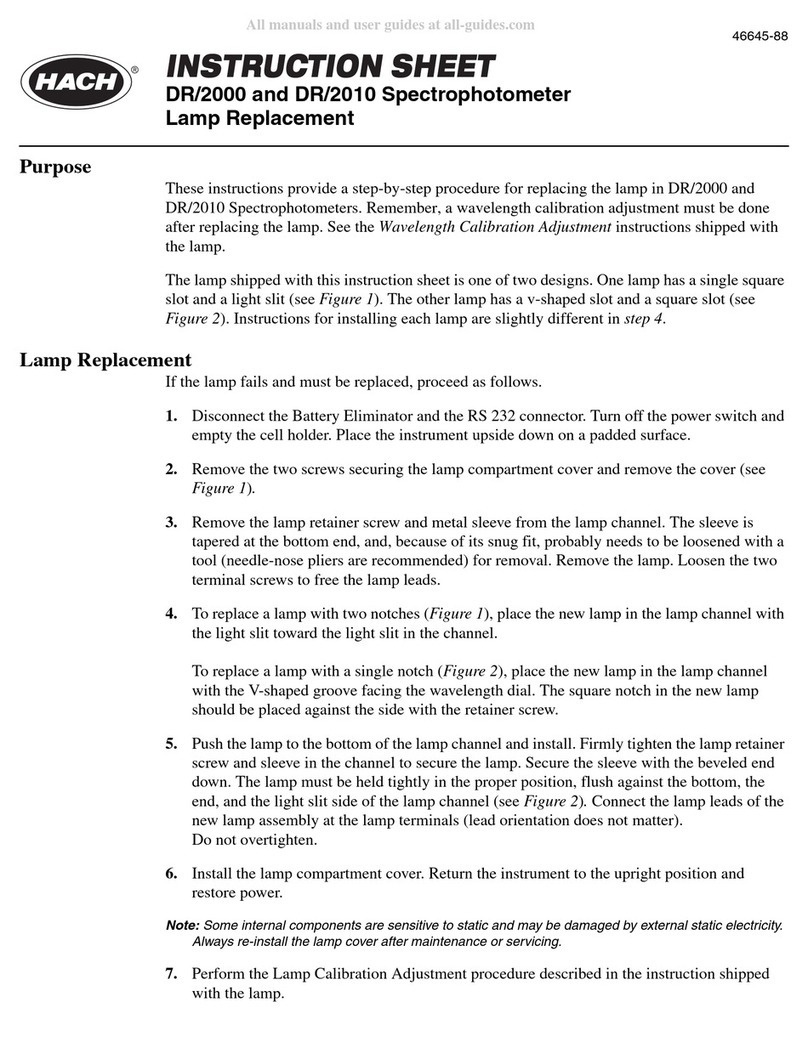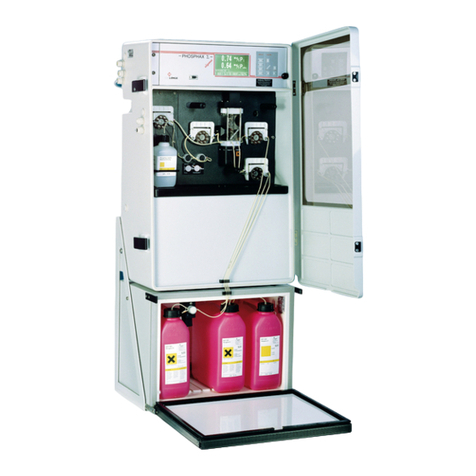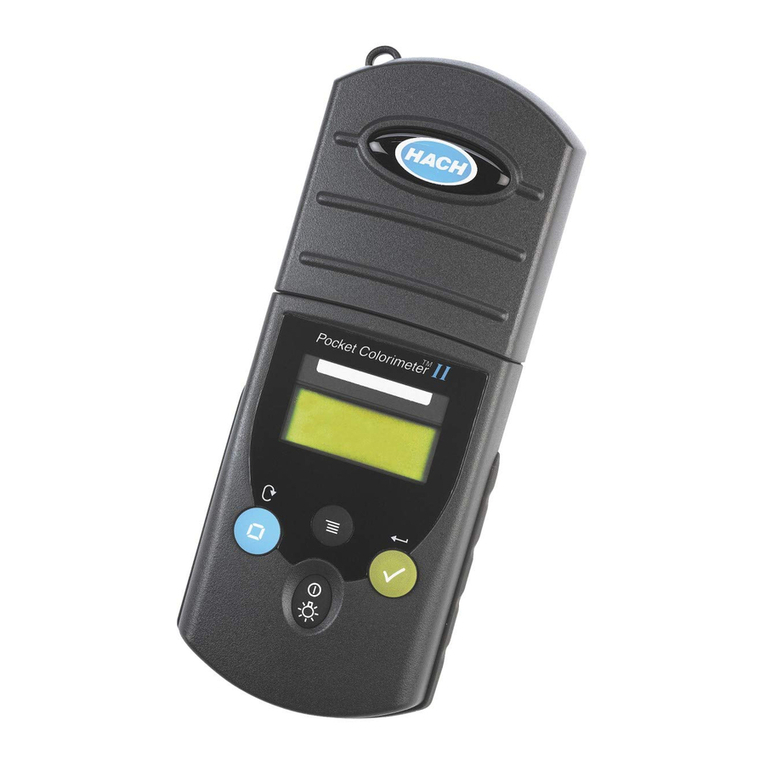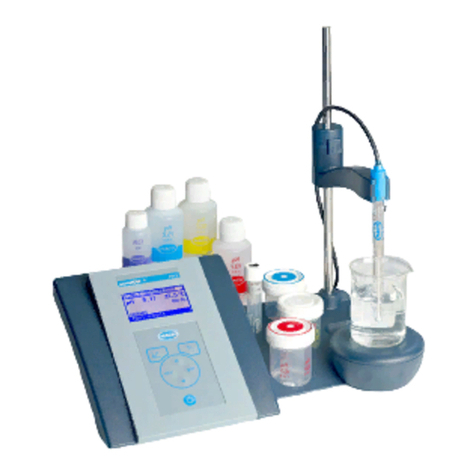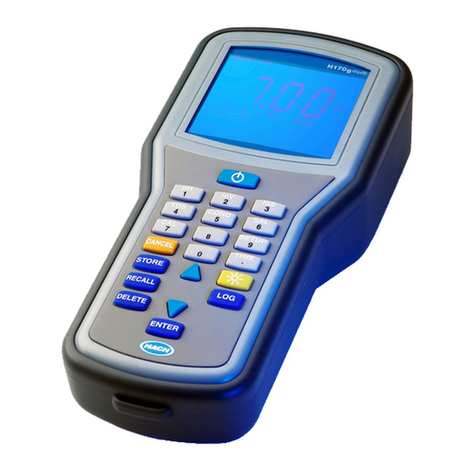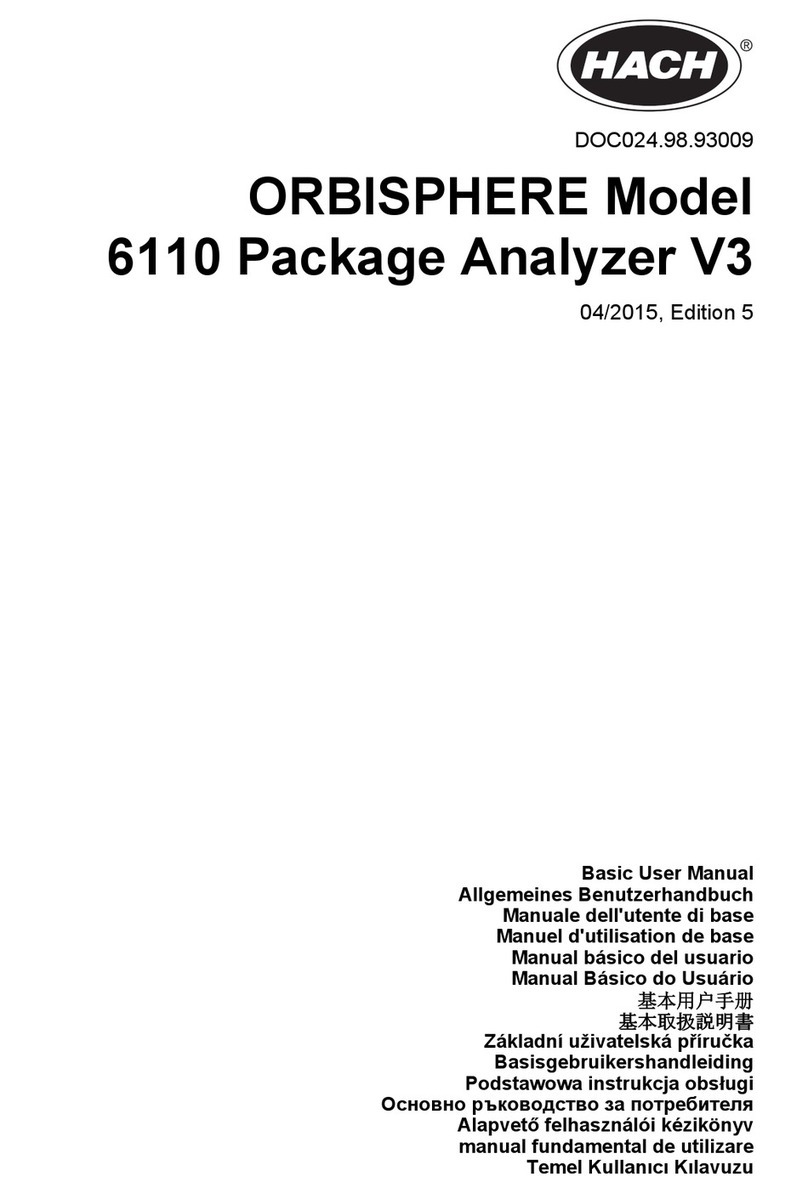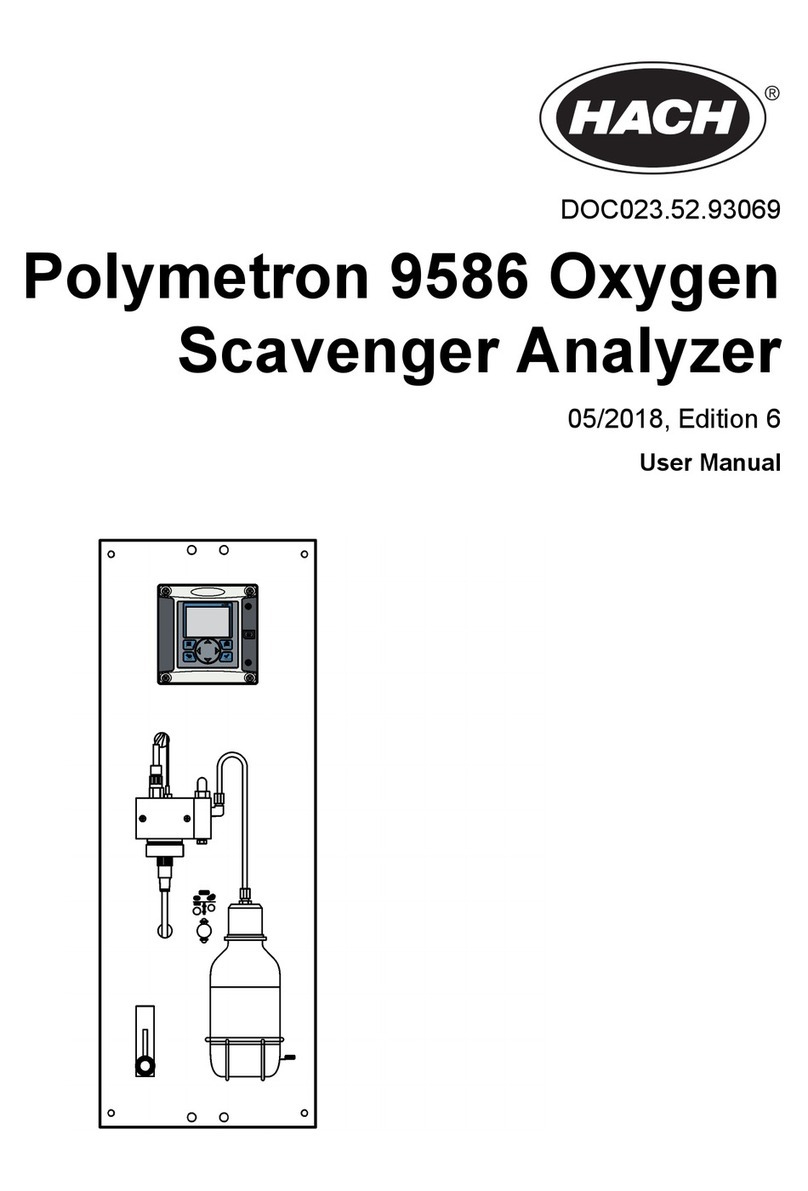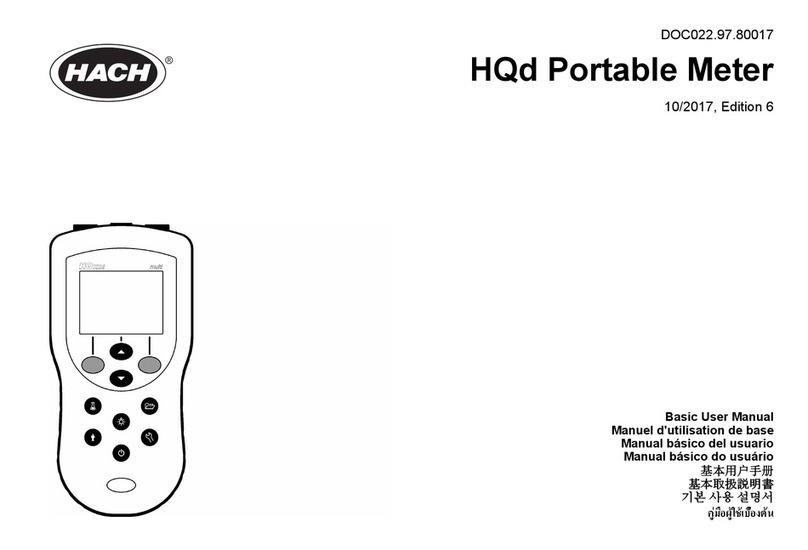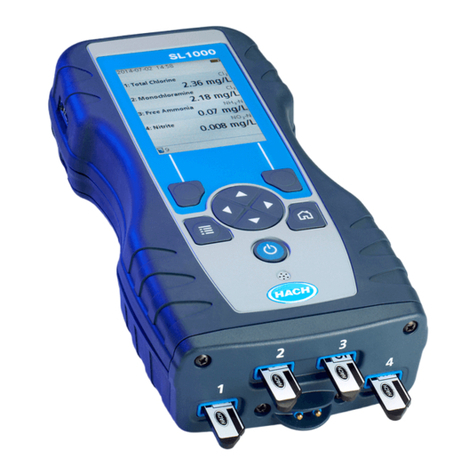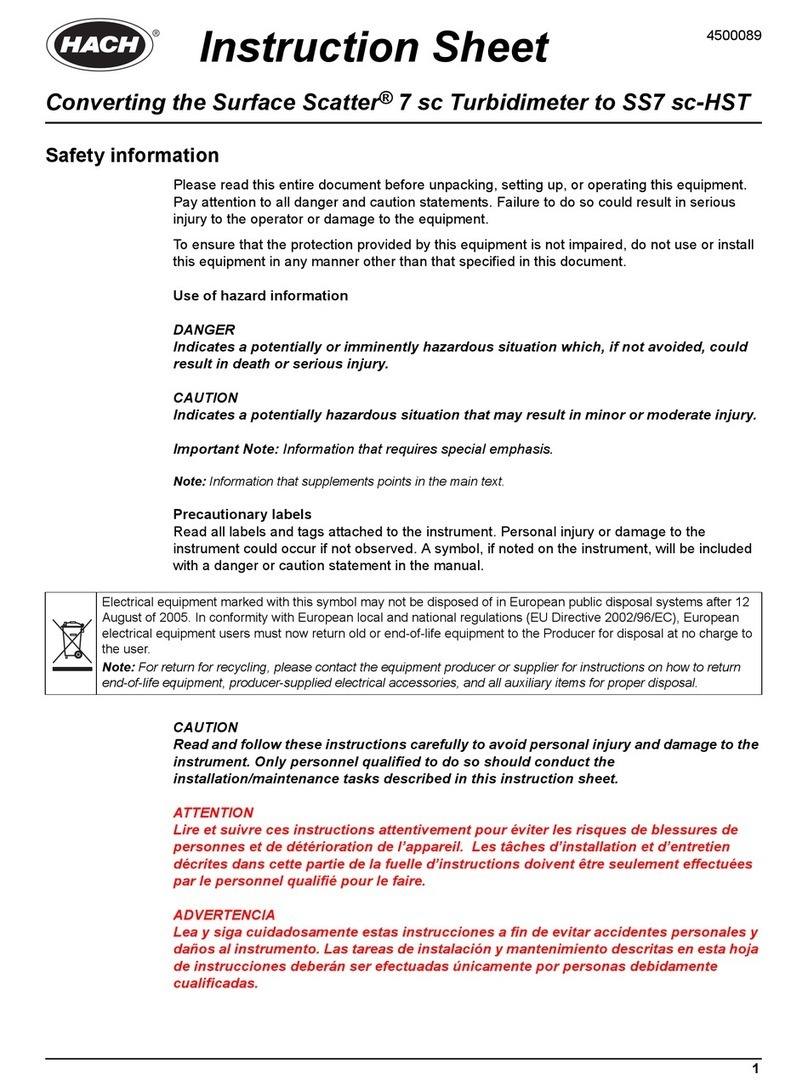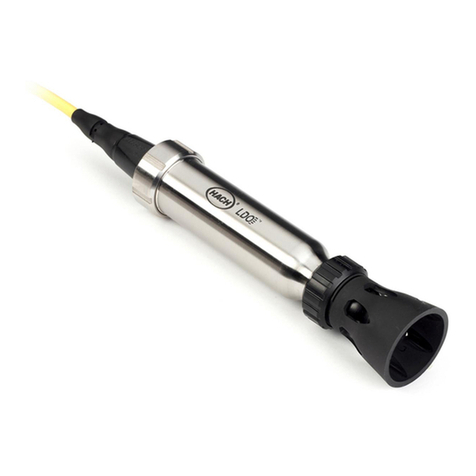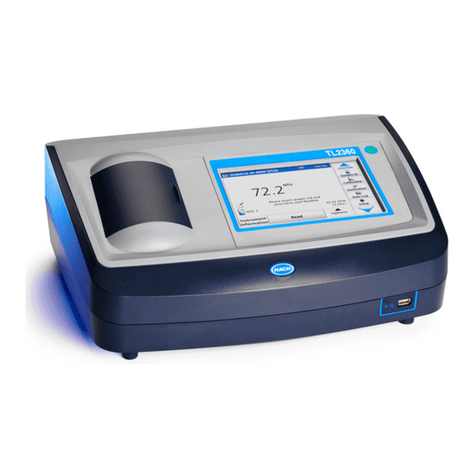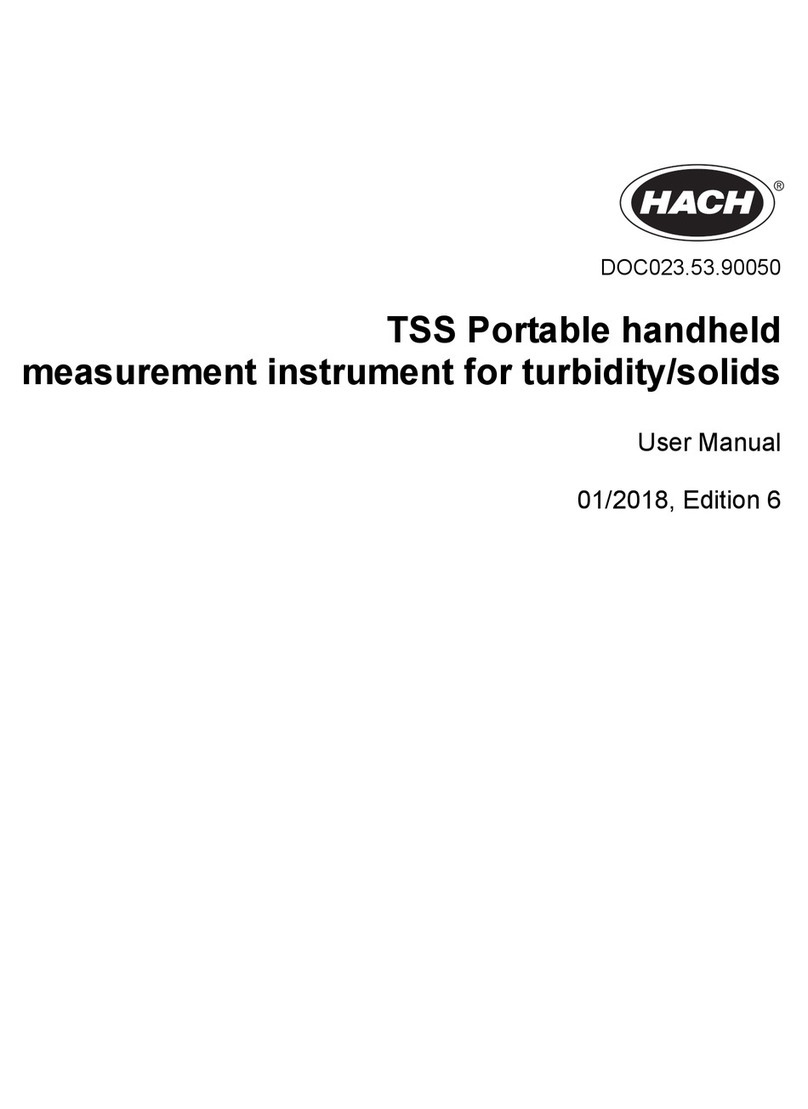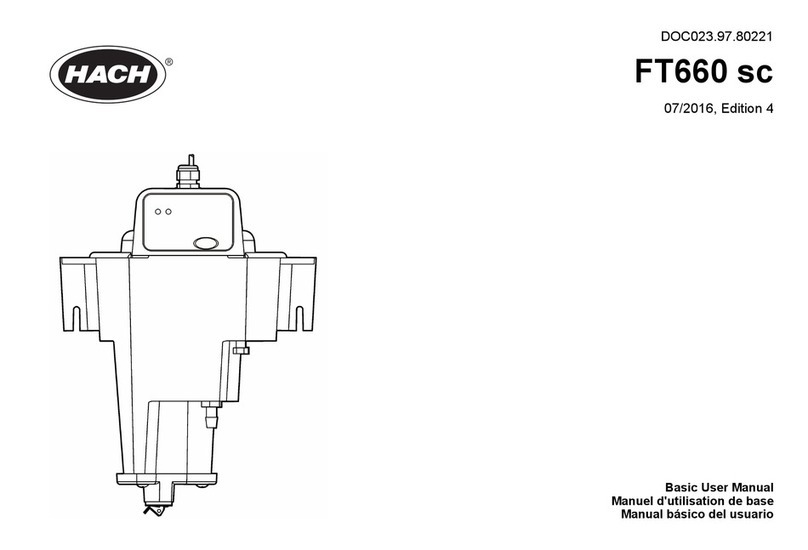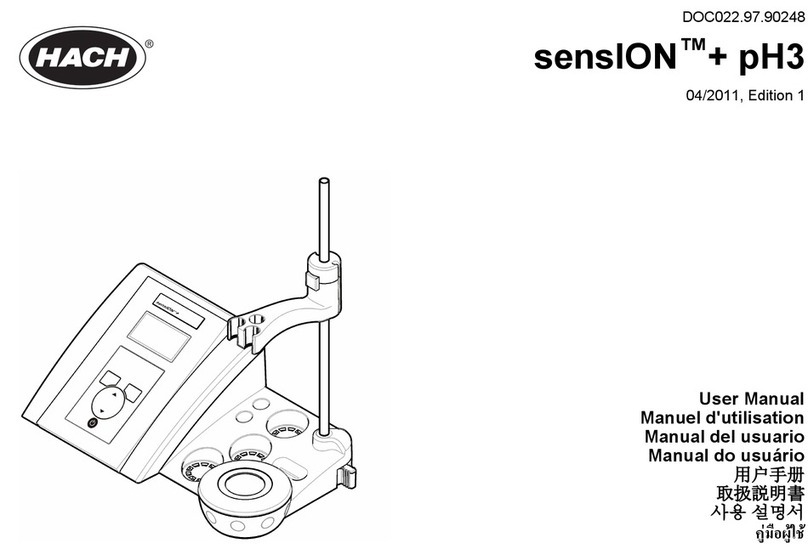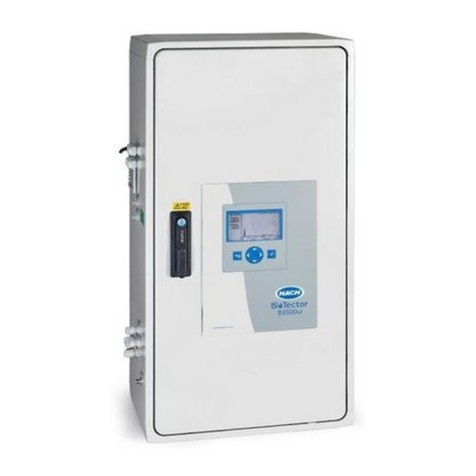
Table of Contents
Section 1 Product overview................................................................................. 3
Section 2 Specifications........................................................................................ 3
Section 3 Safety information............................................................................... 4
3.1 Intended use ....................................................................................................... 4
3.2 Use of hazard information..................................................................................... 4
3.3 Precautionary labels............................................................................................. 5
3.4 Product hazards.................................................................................................... 5
Section 4 Preparation for use.............................................................................. 5
Section 5 Calibration............................................................................................... 8
5.1 Calibration notes ................................................................................................. 8
5.2 Calibration procedure........................................................................................... 9
Section 6 Sample measurement..................................................................... 10
6.1 Sample measurement notes ............................................................................. 10
6.2 Sample measurement procedure....................................................................... 10
6.3 Interferences ..................................................................................................... 11
Section 7 Verify the calibration........................................................................ 12
7.1 Verification procedure......................................................................................... 12
Section 8 Maintenance......................................................................................... 13
8.1 Clean the probe.................................................................................................. 13
8.2 Fill the probe....................................................................................................... 13
8.3 Replace the filling solution.................................................................................. 14
8.4 Storage............................................................................................................... 14
Section 9 Troubleshooting ............................................................................... 16
9.1 Slope check........................................................................................................ 17
9.2 Standard additions check................................................................................... 17
Section 10 Consumables..................................................................................... 18
10.1 Accessories...................................................................................................... 18
1


